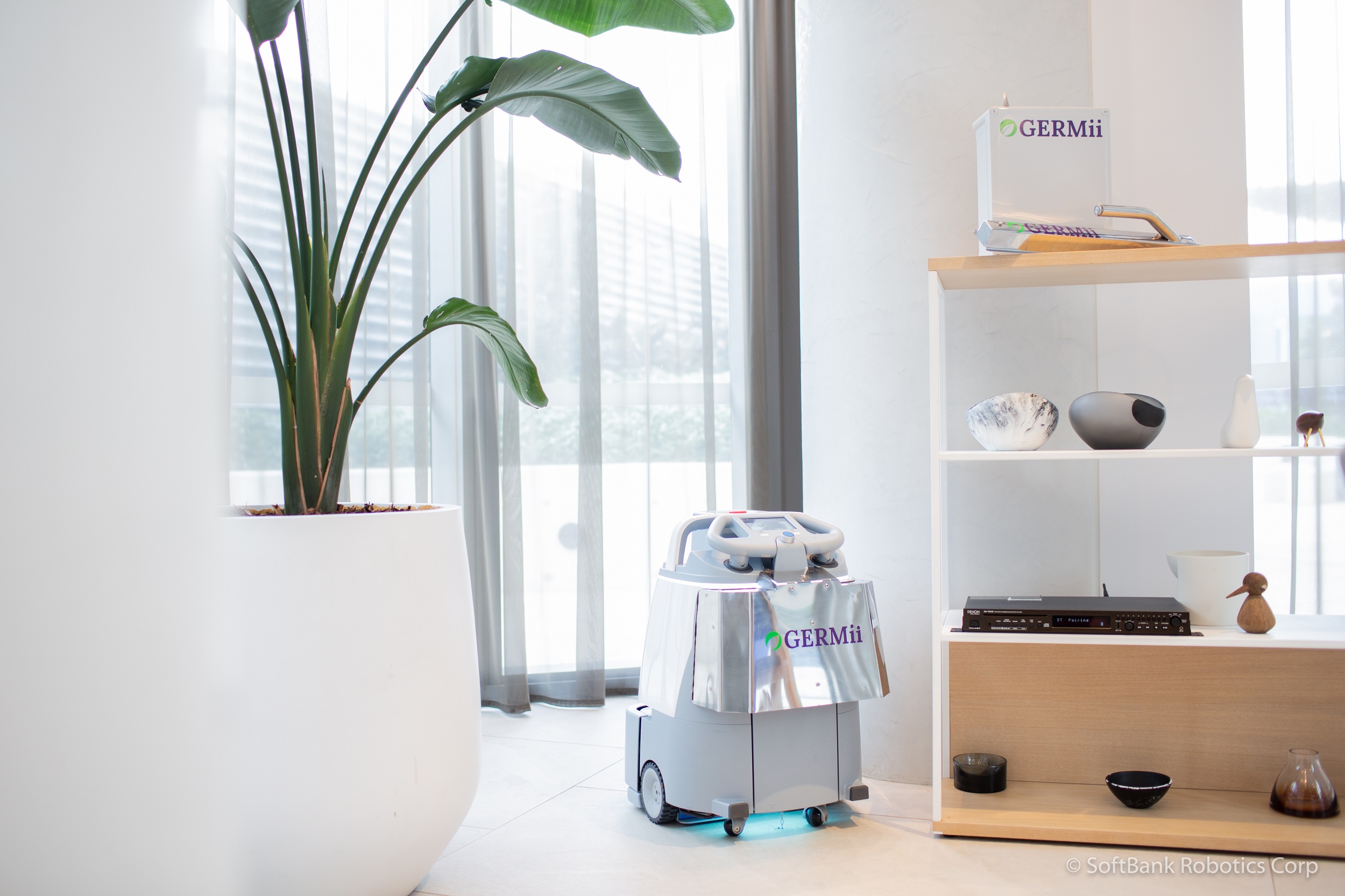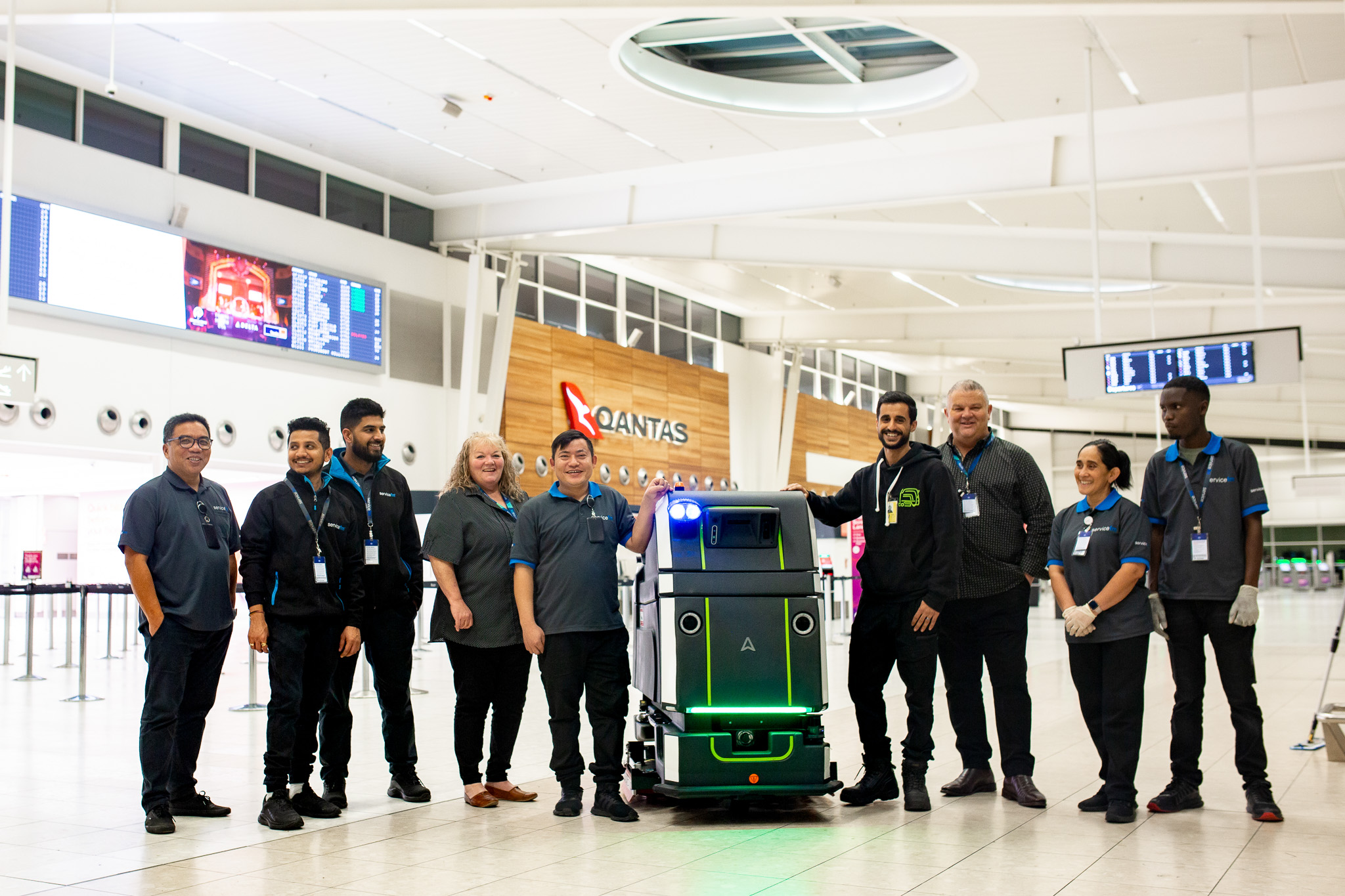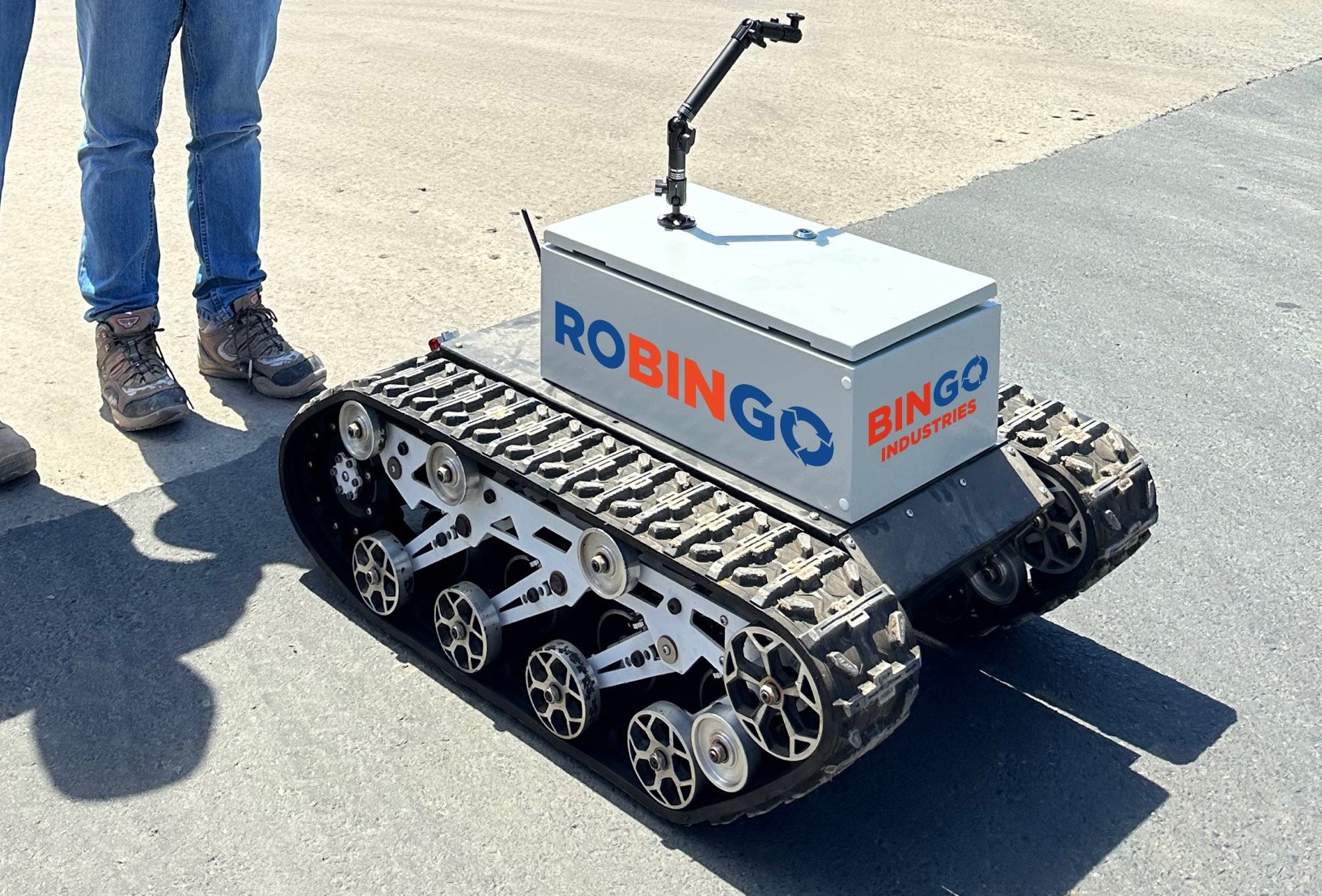
Every day, it seems as if the capabilities of artificial intelligence (AI) and robots grow, and their impact upon our daily lives increases.
While we might not be living out the scenes of science fiction just yet, these developments also offer opportunities for BSCs to increase their capacity, improve their service, and win a greater number of contracts.
The opportunities for maintenance organisations abound. In particular, autonomous machines appear ideally suited for the alleviating of labour and staff shortage pains that have dogged building service contractors (BSCs) in recent years.
Brant Insero, Senior Director of Education, Training, Certification & Standards at ISSA, the worldwide cleaning association, highlights the potential of autonomous machines to increase cleaning efficiency and reduce the staff hours spent on menial tasks.
“It is safe to say that [autonomous machines] will help reduce the redundant tasks that may be labour intensive for an organisation.”
Nevertheless, Insero does not believe that the machines will remove the need for human intervention entirely.
“While no machine is 100 per cent autonomous and does take someone to manage the unit or fleet of units, it can help reduce the possibilities for workplace injuries.
“It is obvious that productivity should increase but the main benefit that I personally see is the ability to have the workforce focus their energy on detailed tasks while autonomous machines may be geared toward the large open space tasks such as autoscrubbing or large area vacuuming.”
Scrubbing for success
Insero’s perspective is supported by an expert in the autoscrubbing field, Lucas Paris, Managing Director of Motorscrubber Australia.
Paris believes that these machines offer benefits when it comes to scrubbing more sizeable buildings.
“Large static environments are usually the best location to deploy robotics fleets, stadiums, airports, warehouses,” Paris says.
Frank Cupido, Managing Director of Hako Australia, says that his organisation is expanding further into robotic scrubbers.
“It is a developing segment for Hako with multiple unit offerings. We currently focus on autonomous floor scrubbers with extensions into other ranges as the technology develops to a consistent Hako standard of performance level.”
And the founder of cleaning robot specialist company, the Robot Factory, Tom Culver, states that robotic scrubbers form one part of his organisation’s stable.
“The Robot Factory sells a large range of autonomous vacuums, sweepers, and scrubbers. We have solutions for small offices all the way up to malls, airports, and massive warehouses. We also sell a few industry specific cleaning robots for manufacturing operations.”
Culver’s company intends to widen its range of robots in the near future – with again, the focus on more significant spaces.
“This spring we will be announcing our new outdoor sweeper that can operate in large open public spaces,” Culver says.
BSC benefits
The benefits of robotics and automation for BSCs come largely in two places: actual cleaning operations, and appeal to clients when bidding for contracts.
“A lot of new tenders are specifically asking for ‘Innovation’. I think any BSC will outperform their peers when they include a robot cleaning strategy while submitting tenders,” Culver says.
But Hako’s Cupido stresses that it is not enough to just put robots in a BSC’s stable and expect to pick up new clients.
“Important to note robots don’t win contracts, people do! It is those people who are able to demonstrate the increased productivity, consistent cleaning results, and cost savings in the long run.”
Cleaning and maintenance, like all industries, has had to reckon with staff and skill shortages, and this is an area where Cupido believes robots can make an immediate difference.
“Some common challenges faced by BSCs and facilities is mainly around, supervision during night time cleaning, skill and labour resource shortages, coupled with rising labour costs, all delivering inconsistent cleaning quality,” Cupido suggests.
“Autonomous cleaning machines can help overcome these challenges by automating the manual cleaning processes to improve cleaning consistency with productivity increases. It enables the BSCs to free-up workers that can be re-deployed to focus on more complex or specialised tasks.”
For Insero, these machines can also reduce the amount spend on cleaning materials, and remove human error from the equation.
“Whether it be a robotic floor machine or ‘Internet of Things’ technology with their dispensers, it helps control cost, wasted motion and allows data to control the decision vs. emotion.“
Finally, Cupido also states that these machines have the “ability to deliver higher standards of hygiene without additional costs to their clients with the ultimate goal of reducing costs.”
Navigating challenges
While the benefits of autonomous machines are manifold, they are not a cure-all solution for every space, and will demand the same upkeep and maintenance as other cleaning devices. Paris states that automated machines will continue to require the human touch.
“Robotics obviously aim to remove the need for a team member to be allocated to operating the machine, this [requirement] is not eliminated though as mapping, charging, filling of the machine duties still need to be completed with the majority of machines.
“Robotic equipment does have a place in larger environments but the need for human interaction is still relevant and will not be eliminated.
“They have value in the right area and will improve efficiencies, but they will never completely remove the need for human interaction on sites.”
A similar note is struck by Andrew Dillon, Business Development ANZ for Brain Corp, which creates software for robots and autonomous machines.
“It’s important to note that while autonomous machines offer numerous benefits, they are not intended to replace human cleaners entirely.
“Instead, they are designed to complement human efforts, allowing cleaning companies to optimize their operations and leverage the advantages of both automation and human expertise,” Dillon says.
The devices are also expensive, which can represent a significant hurdle to clear for smaller organisations, according to Insero.
“Upfront cost is a barrier for many to entry, but new and innovative business models are starting to come to market from some technology companies to help implement robotics.
“Smaller BSC’s struggle with cash flow or large enough capital to invest into new equipment.”
Indeed, while convinced of the benefits of autonomous machines, Culver believes that BSCs need to be clear-sighted about the capabilities of these devices.
“Cleaning robots do not fit in every situation,” Culver says.
“It’s critical to work with a company that knows robots and has experience with real world applications.”
Similarly, Paris thinks that there are certain areas where robots tend to struggle.
“The ability for the robots to get to edging and corners is still a challenge for most robotic equipment.”
But this is an aspect of where Culver sees improvements.
“The robots we sell are now much easier to set up and map with simple interfaces that a novice can use,” he says.
“Plus, we can now scrub, vacuum, and mop right up to the edges of walls.”
And Brain Corp’s software is also designed to alleviate these challenges, as Dillon explains.
“Brain Corp’s software BrainOS® enables autonomous cleaning machines to operate independently, navigating complex environments, avoiding obstacles, and performing cleaning tasks efficiently and effectively.”
There are also some barriers to entry to consider, and due diligence to be performed, before getting started with robotic cleaning equipment.
“Time needs to be spent upfront with a full onsite evaluation of the facility that needs cleaning. This upfront study of the potential is critical so that the BSC’s can understand the real-world potential of the robot in a specific setting,” Culver explains.
And Paris concurs, saying: “Ensure lengthy trials are completed at your site, make sure you have confidence in the after sales service of your provider, these machines are highly technical and take a great level of technical ability to troubleshoot error and onsite challenges.”
Artificial intelligence is genuine reality
Artificial intelligence is more than a passing fad and looks primed to have a significant effect upon how BSCs go about their operations.
“One of my key interests is AI and I find it fascinating and indeed, a bit scary,” Culver states.
Additionally, there is a growing focus on connectivity and data analytics, enabling remote monitoring, predictive maintenance, and performance optimization of cleaning robots.
And the Robot Factory is already introducing this technology into their machines.
“We already have a form of AI on our new Phantas robot. The auto spot cleaning 4X efficiency and floor type recognition this robot uses is a form of AI and it is smart enough to recognise say, a power cord, in its path and avoid it.”
Brain Corp is a specialist in this space, and Dillon illustrates how the organisation is using AI.
“AI and machine learning algorithms are likely to play a more significant role in the future of autonomous cleaning machines. These technologies can enable robots to learn from their experiences, optimise their cleaning strategies, and adapt to specific environments,” he says.
“They can also facilitate predictive maintenance, anomaly detection, and data-driven decision-making to enhance performance and efficiency.”
Cupido similarly describes how he sees this technology being introduced.
“Some of the hot trends in cleaning robotics include the integration of artificial intelligence and machine learning algorithms to enhance navigation and decision-making capabilities of robots, the use of advanced sensors for better environment perception and obstacle avoidance, and the development of collaborative robots (cobots) that can work alongside human cleaners.
“Additionally, there is a growing focus on connectivity and data analytics, enabling remote monitoring, predictive maintenance, and performance optimisation of cleaning robots,” Cupido continues.
In this regard, AI appears to be solving some of the drawbacks of robots previously highlighted by industry leaders. Culver further explains how the technology will be incorporated into his company’s offering.
“We are currently testing several software applications that can run on the robots to detect spills to minimise the risk of any slips. The Robot Factory studies all of these new potential applications, but we only bring to market technologies we know work and that we test ourselves.
“There is a lot of hype out there that we try to cut through for our customers, so they get solid automation tools with proven ROI.”
The full picture
Ultimately, it is undeniable that autonomous cleaning machines, enhanced through the use of software and AI, will continue to shape the future of the sector.
While they must be implemented thoughtfully, and they will not solve every problem BSCs face, there are clear advantages for cleaning companies and contractors looking to include the devices in their portfolio.
Culver is bullish about the future importance of robots and AI to the cleaning industry.
“I think all BSCs should start thinking about a robot strategy now,” he says.
“The robots often keep the floors cleaner with their consistency and at the end of the day that keeps the customer happy.
“BSCs should look for a robot partner that has experience and can service and support them. The robot technologies and manufactures will change so look for a partner that can ensure your robot journey is not a one-way street,” Culver says.
Cupido is similarly convinced, declaring the machines “the only way to increase hygiene standards in an affordable way for their clients.”
“By embracing automation, [BSCs] can improve their cleaning efficiency, enhance service quality, reduce labour costs, and differentiate themselves from competitors.”
Cupido also does not think these trends mark the end of the road for human cleaning staff.
“Autonomous machines represent a significant opportunity for BSCs to transform their operations and deliver higher quality services,” he says.
“However, it’s important to remember that while robots can automate certain tasks, human workers still play a crucial role in managing and maintaining these machines, as well as performing specialised cleaning tasks that require human judgement and dexterity.
“Striking the right balance between human expertise and robotic automation can lead to optimal cleaning outcomes and customer satisfaction,” Cupido concludes.
This article first appeared in the July/August issue of INCLEAN magazine.
Comment below to have your say on this story.
If you have a news story or tip-off, get in touch at info@incleanmag.com.au
Sign up to INCLEAN’s newsletter.





